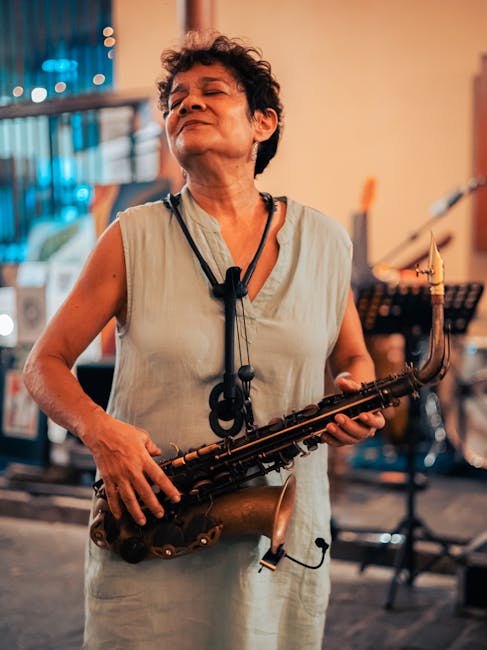The intersection of artificial intelligence and artistic expression is no longer a futuristic fantasy; it’s a vibrant reality reshaping the landscapes of art and music. AI-driven creativity is pushing the boundaries of what’s possible, challenging traditional notions of authorship and sparking a fascinating debate about the nature of creativity itself. This exploration delves into the ways AI is transforming these creative fields, examining both the opportunities and challenges it presents.
AI Tools and Their Artistic Applications:
A plethora of AI tools are now available, empowering artists and musicians to explore new creative avenues. These tools leverage various AI techniques, including:
Generative Adversarial Networks (GANs): GANs are particularly impactful in visual arts, generating unique images, sculptures, and even entire virtual worlds based on input parameters or styles. Artists use GANs to create stunningly realistic portraits, abstract landscapes, and entirely novel visual concepts. The ability to iterate and refine images quickly accelerates the creative process significantly.
Machine Learning Algorithms: These algorithms are utilized in various applications, from composing music to generating realistic textures and patterns in digital painting. By analyzing vast datasets of existing artworks and musical scores, these algorithms can learn stylistic patterns and generate new works that emulate specific artists or genres.
Deep Learning Models: Deep learning models are at the heart of many advanced AI art tools. These models can analyze complex artistic elements, like brushstrokes, color palettes, and musical harmonies, allowing for sophisticated manipulation and generation of creative content. This level of analysis allows for creating unique and nuanced artistic outputs previously unimaginable.
The Impact on Music Creation:
AI is revolutionizing music composition and production in several ways:
Automated Composition: AI can generate complete musical pieces, from simple melodies to complex orchestral arrangements, based on specified parameters like genre, tempo, and instrumentation. This opens up exciting possibilities for both seasoned composers who can use AI as a collaborative tool, and aspiring musicians who can explore new musical ideas effortlessly.
Sound Design and Effects: AI is being used to create innovative and realistic sound effects, expanding the sonic palette available to musicians and sound designers. From generating unique textures to manipulating existing sounds, AI empowers artists to achieve previously unattainable sonic landscapes.
Personalized Music Experiences: AI algorithms can analyze listener preferences to generate personalized playlists and even compose music tailored to individual tastes. This personalized approach is transforming how we consume and interact with music.
The Impact on Visual Arts:
The influence of AI on visual arts is equally profound:
Style Transfer: AI can seamlessly transfer the style of one artwork onto another, allowing artists to explore new aesthetic combinations and reinterpret existing works in novel ways. This capability unlocks a wealth of creative possibilities, blending different artistic traditions and pushing the boundaries of stylistic expression.
Digital Painting and Sculpture: AI tools enhance the capabilities of digital painting and sculpting software, providing artists with advanced tools for texture generation, brushstroke simulation, and 3D modeling. This allows artists to focus on the creative aspects of their work while letting AI handle the technical complexities.
Interactive Art Installations: AI is powering increasingly sophisticated interactive art installations, allowing audiences to participate in and influence the creation of artwork in real-time. This participatory aspect transforms the audience from passive observers to active collaborators.
Challenges and Ethical Considerations:
Despite the enormous potential, AI-driven creativity also presents several challenges:
Copyright and Authorship: Determining the copyright ownership of AI-generated art is a complex legal and ethical issue. Questions around the role of the human artist versus the AI algorithm remain at the forefront of the debate.
Bias and Representation: AI models are trained on existing datasets, which may reflect societal biases. This can lead to AI-generated art that perpetuates or amplifies existing inequalities. Addressing this bias is crucial for ensuring fair and inclusive representation in AI-driven art.
The Definition of Creativity: The very nature of creativity is being questioned in the context of AI. Is AI truly creative, or is it simply mimicking and recombining existing patterns? This philosophical debate continues to shape the discourse surrounding AI’s role in art.
Conclusion:
AI-driven creativity is undeniably reshaping the artistic landscape. While challenges remain, the transformative power of AI in art and music is undeniable. By embracing responsible innovation and addressing ethical concerns, we can harness the potential of AI to unlock new forms of artistic expression and usher in a new era of creative collaboration between humans and machines. The future of art and music is being written, one algorithm at a time.


